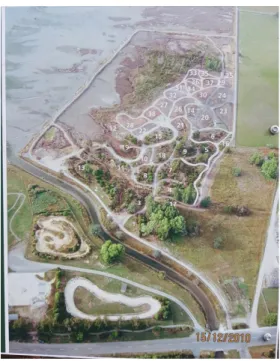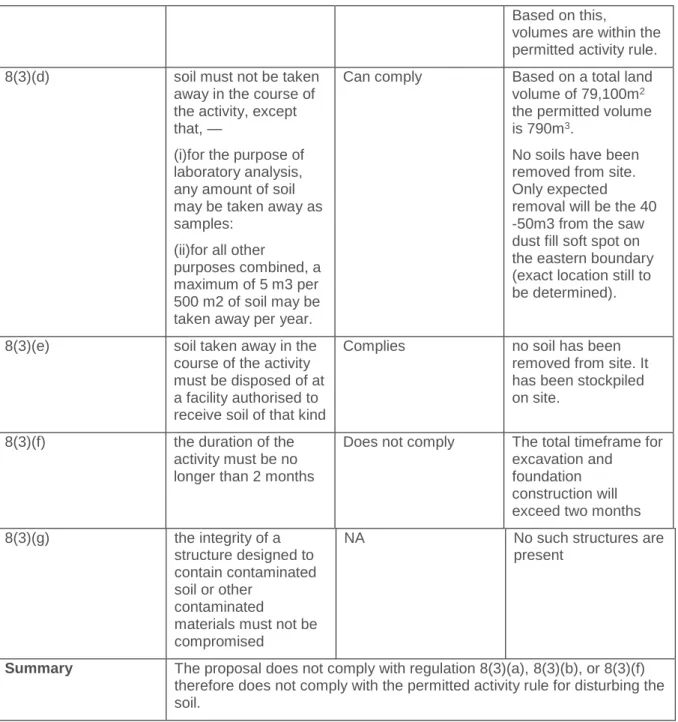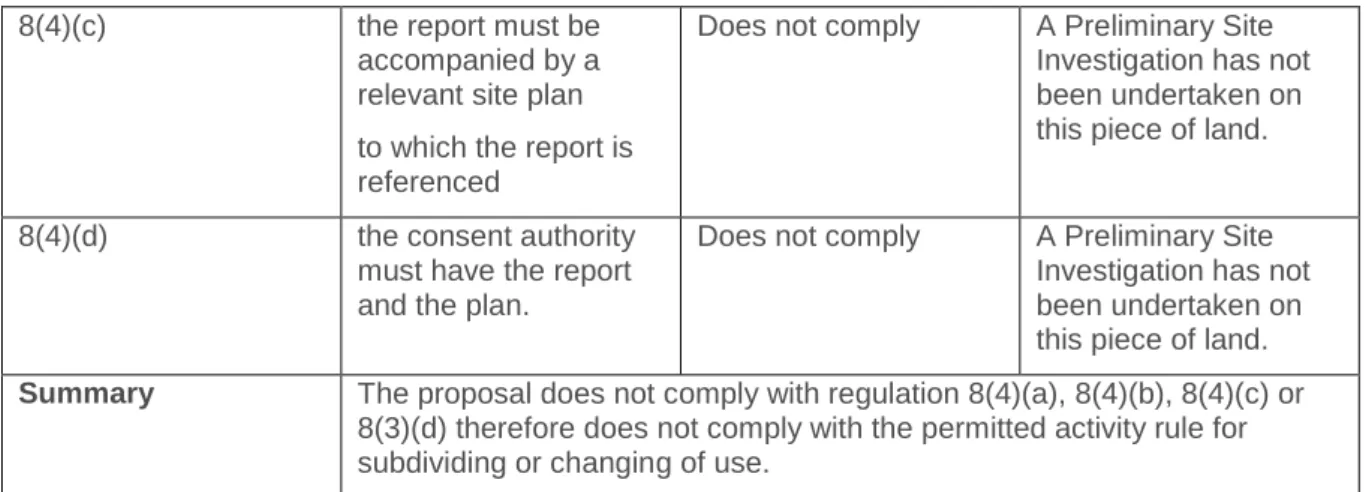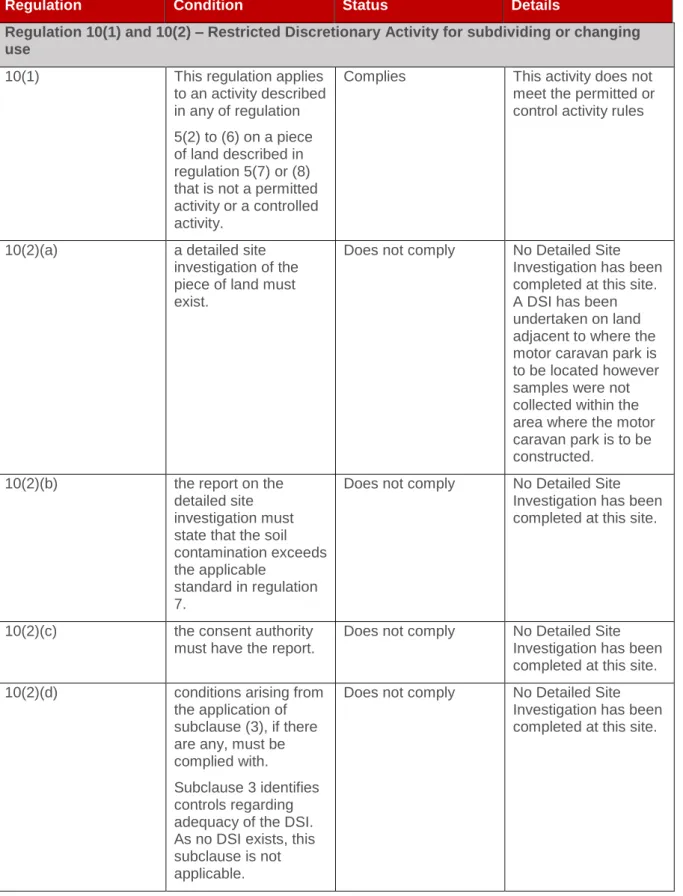This site has been selected following discussion with the Tasman District Council as the land owners. This would prevent the NZMCA and its members using the site from objecting to the legitimate operation of the cold store site. This is outside the proposed area, but serves the same purpose of screening the site from the crossing.
These will be located on the northern boundary next to the large existing hedge which will provide protection from the buildings. Proponent 4, Mr. Fredric Patrick, raised the issue of the possibility of the site being contaminated land. A section 92 letter dated 9 January 2017 raised a question about the effects of potential flooding or flooding at the site.
There appears to be little, if any, demand for additional space for recreational activities at the proposal site. vi). As discussed in relation to the NZCPS, this proposal does not adversely affect the natural character of the coastal environment. As mentioned in section 42a, the report's advice on making this application has been distributed to iwi.
Environmental quality is maintained through site characteristics and proposed planting. I generally agree with the rapporteur on how the proposal relates to the objectives and policies of the TRMP. Permission is limited to the inclusion and wording of the lease agreement with the party holding the lease.
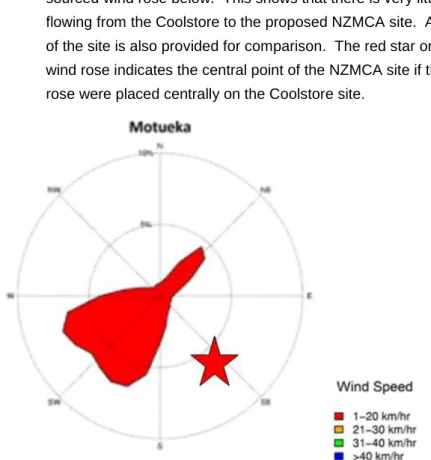
NZMCA Code of Conduct
ENVIRONMENTAL CARE CODE
MEMBERSHIP CODE OF CONDUCT
Proposed Site Plan
Appendix 3: Opus Refrigerant Requirements Memorandum, Gordon Vanderlinden (CPEng) 11 Aug 2017
Regardless of the consent issue, there is a requirement not to allow pollutants beyond the title boundary and the plant must comply with this condition without affecting the activities of their neighbours. Ammonia leaks are required to be reported and local emergency services must be called for any reported event, who will then determine if evacuation is required. The site would require an evacuation plan under Health and Safety Legislation and this should have named people affected, or those who should be notified when a leak occurs.
The plant must be able to demonstrate the likelihood of leaks and their extent as information that is made publicly available as a good corporate citizen. As mentioned, ammonia now falls under the Hazardous Substances Regulations, and the plant must demonstrate that they meet their requirements under these, including preventing leaks and maintaining plant to minimize damage from degradation. Under the Building Act, all buildings must meet performance criteria as set out in the Act and the most relevant for cold rooms relate to specified systems for cold rooms.
Gas detection and alarm systems are defined by law as specified systems and therefore these buildings must be issued with a compliance schedule covering the inspection, maintenance &. Therefore, the effect of an earthquake to cause a leak must be managed under this standard to ensure that the plant is kept in a safe condition. The plant must be maintained to a high standard to ensure a low probability of leaks.
This is outlined in the IRHACE Code of Practice for the Reduction of Emissions from Hydrofluorocarbon Refrigerants in Refrigeration and Air Conditioning Applications (2001), which requires the operator and maintainer to accurately record and monitor areas where leaks are expected and to ensure the integrity of the structure. is preserved. the plant in general. Furthermore, this Code of Practice must be complied with by legislation to ensure that no installation is commissioned with a leak. Section 4.5 requires refrigeration equipment to be fitted with relief devices which, when activated, do not release the entire refrigerant charge and which reset automatically when activated, Section 4.5.1 IRHACE Code of Practice 2001.
These should be used in conjunction with a rupture disc to maintain system integrity during relief device maintenance. Under section 4.9, load monitors and leak detection are required to alert equipment owners and operators to a refrigerant leak, the installation must monitor the extent to which their system is operating. Under section 8.3.6 the guidelines provide a mechanism by which leaks can be minimized, again the installation must be able to demonstrate these checks.
AS/NZS 5149 2 (2016)
Legal Advice, Gallaway Cook Allen, Ammonia Leakage, 11 Aug 2017
- We have reviewed the information you have provided to us in relation to Motueka Cold Storage Limited (MCSL) and the health and safety concerns identified within their
- We have reviewed the information you have provided to us, most notably
- In our opinion dated 7 th August 2017 we refer to Blue Skin Bay Forest Heights Limited which outlined that the Court was to assume that both the terms of resource consent and
- We refer to the report prepared by Opus for a full and comprehensive analysis of the relevant controls
- The relationship between the Resource Management Act and other legislation has been given considerable discussion, particularly in relation to public safety and hazardous
- The management of hazardous substances is adequately controlled within the documents identified within the Opus report. To impose further health and safety controls in respect
- If you have any further questions about the information provided above do not hesitate to contact us
We have reviewed the information you have provided us in relation to Motueka Cold Storage Limited (MCSL) and the health and safety issues identified in their Storage Limited (MCSL) and the health and safety issues identified in their submission . Their central concern is that the existence of the NZMCA caravan park will increase the risk to the public should a chemical spill occur. In our opinion of 7 August 2017 we refer to Blue Skin Bay Forest Heights Limited which outlined that the Court should assume that both the terms of resource consent and which outlined that the Court should assume that both the terms of resource consent and the general law will be complied with, otherwise it would be almost impossible to grant resource consent.1 Therefore, we assume that, in the case of MCSL, it must be assumed that they will fulfill their obligations under the relevant health and safety controls.
We refer to the report prepared by Opus for a full and comprehensive analysis of the relevant controls. The relationship between the Resource Management Act and other legislation has been significantly debated, particularly in relation to public safety and dangerous given considerable discussion, particularly in relation to public safety and dangerous conditions. In Petone Planning Action Group Incorporated v Hutt, the Court held that, in the circumstances, there was no resource management purpose in controlling construction work to achieve performance criteria other than those specified in the Building Act.2 It was confirmed in the High Court that effects, special public safety and hazard conditions, which are fully controlled under the Building Act, need not be a matter for separate assessment in a resource permit application under the RMA, unless the town plan prescribes it.3 It was determined that it matters. relating to health and safety had been adequately dealt with under the Building Act. b).
There are some exceptions to this rule, for example in Christchurch International Airport v Christchurch City Council, where the court held that the RMA can regulate matters more traditionally within the jurisdiction of the Building Act if the purpose of administering the applicable resource consent justifies the exercise of powers under with RMA .4. We cannot identify any specific provision of the Tasman District Plan that would trigger a separate health and safety assessment in addition to the controls already in place. The handling of hazardous substances is adequately controlled within the framework of the documents defined in the Opus report.
Imposing additional health and safety controls in respect of the NZMCA would not be attributable to the legitimate exercise of powers under the RMA. If you have any further questions about the above information, please do not hesitate to contact us.
Memorandum
Christopher Bergin, 33 Old Wharf Road – Consent Requirements, 10 Aug 2017
- Introduction
- National Environmental Standard
- Permitted Activity Rules
- Controlled Activity Rule
- Restricted Discretionary Activity Rule
- Consent status
- Next steps
The possibility that the proposal (and existing earthworks) is a permitted activity according to the Council Officer Report. The physical and consent steps that NZMCA must take to address the requirements of the NESSC and ensure that human health is protected. The express purpose of the NESSC and its supporting documents is to manage contaminants in soil where they may pose a risk to human health.
Regulation 8(3) – Permitted activities Disturbance of land 8(3)(a) controls to be reduced. human exposure to mobilized contaminants must—. i) be in place when the activity begins:. It does not meet the requirements, it cannot ensure that all exposure control measures have been put in place. 8(3)(e) soil taken during the activity must be disposed of in a facility authorized to receive such soil.
Does not comply The total time frame for excavation and foundation construction will exceed two months 8(3)(g) the integrity of s. Summary The proposal does not comply with regulation 8(3)(a), 8(3)(b), or 8(3)(f), therefore does not comply with the permitted activity rule for disturbing the land. Not Compliant A preliminary site investigation has not been undertaken on this piece of land.
Summary The proposal does not comply with regulation 8(4)(a), 8(4)(b), 8(4)(c) or 8(3)(d) and therefore does not comply with the permitted activity rule for subdivision or variation of use. 9(1)(b) the detailed site investigation report must state that the soil contamination does not exceed the applicable standard in regulation 7. Summary The proposal does not comply with regulation 9(1)(a), 9(1) ( b), 9(1)(c) or 9(1)(d), therefore does not comply with the controlled activity rule for subdivision or change of use.
9(3)(b) the detailed site investigation report must state that the soil contamination does not exceed the applicable standard from Regulation 7. Summary The proposal does not comply with Regulation 9(3)(a), 9(3)(b), 9 (3)(c) or 9(3)(d) is therefore inconsistent with the controlled activity rule for subdivision or repurposing. Summary The proposal does not comply with Article 10(2)(a), 10(2)(b), 10(2)(c) or 10(2)(d) and therefore does not comply with the limited discretionary activity rule. for distribution or change of purpose.
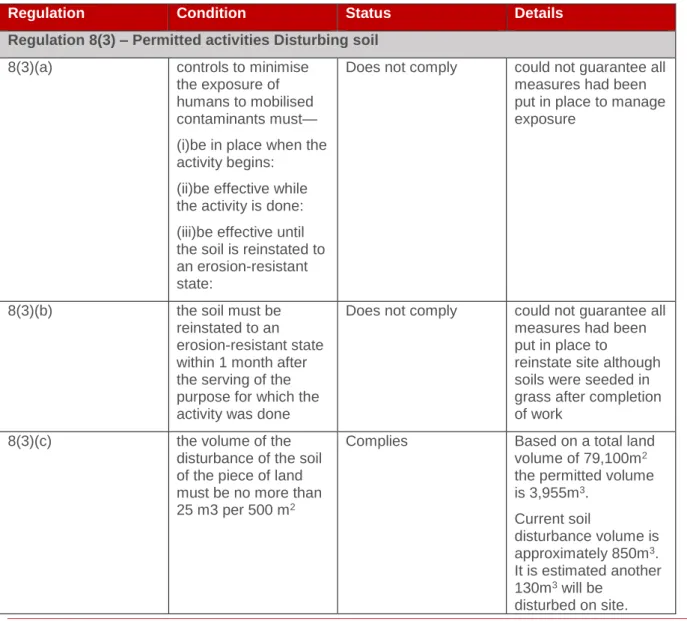
Tasman District Council, Access Crossing Approval, 6 Dec 2016
Appendix 8: Motueka Community Garden Trust comments attached to written approval form (sheet undated)
